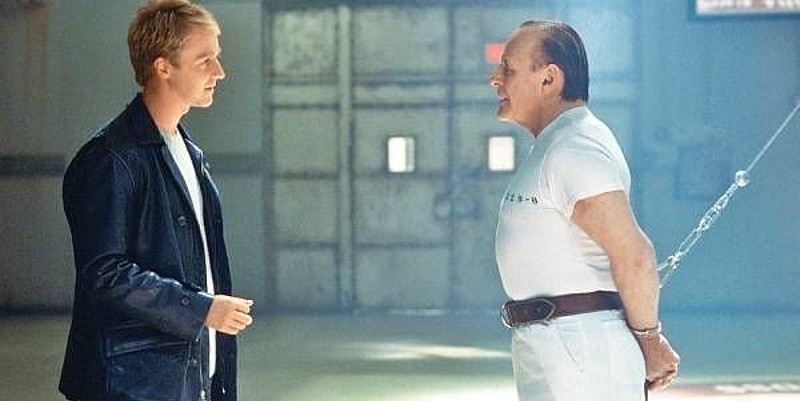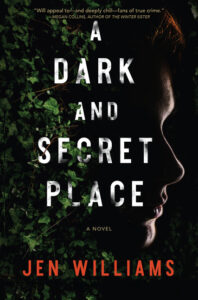Like a lot of people (or a lot of writers, anyway) I’ve been fascinated by serial killers since I was a child. Whether pilfering my cousin’s true crime magazines or trying to sneak out of the library those non-fiction books with a section of grisly black and white photos in the centre, I was compelled to find out more about them. Despite being what my family charitably termed “a sensitive kid,” I was very much drawn towards horror and dark things, and I’ve never grown out of that. I loved horror movies too, even though half the time I was much too scared to actually watch them, and I would especially crave those that seemed to have one foot in the real world. Freddy Krueger, after all, was killed by his neighbours because he was himself a serial child killer, and Michael Myers was, aside from being an unkillable creep, a fairly straight forward serial murderer. Vampires and werewolves and xenomorphs with acid for blood were all fine, I guess, but serial killers were another level up in the horror stakes because they were actually real. Or they could be.
The reality of serial killers, of course, is usually somewhat more mundane. Most of the time they are simply grim and damaged men with a need to feel power over others. They aren’t Machiavellian geniuses with a love of opera, or agents of darkness powered by an otherworldly evil; they are just terrible men— and sometimes women—who destroy because it’s the only way they feel anything at all. As I grew older, this side of serial murder became interesting to me too, and it’s certainly something I kept an eye on when writing my own books, but I still do enjoy reading about the extravagant serial murderers of fiction. Why? For the usual reasons we enjoy horror and crime—because it’s satisfying to see the monster defeated. Because it reminds us that terrible things lurk in dark corners, yes, but also that they can be beaten. Here are a few of my favourite examples.

Francis Dolarhyde of Red Dragon
You could hardly have a list like this without talking about Thomas Harris and his iconic cast of serial killers, and, specifically of course, Dr Hannibal Lector. First appearing in 1981’s Red Dragon, the doctor is in many ways the grandfather of fictional serial killers, undoubtedly giving birth to hordes of murderers after the huge success of The Silence of the Lambs. After all, it’s Dr. Lector who has really sold us on the idea of a murderer who is just so much cleverer than anyone else in the room, and if you’re a fan of the TV series Hannibal, one who dresses impeccably well, too. But for me the killer that truly haunts me from Thomas Harris’s excellent books is Francis Dolarhyde. Dubbed “the Tooth Fairy” by the press (and what a fantastically rubbish nickname that is), Dolarhyde is murdering entire families to quicken his transformation into a being he calls “the Great Red Dragon,” and Will Graham must enlist the help of Dr. Lector to stop him. Dolahyde is equal parts fascinating, terrifying, and tragic. He is obsessed with William Blake’s painting “The Great Red Dragon and the Woman Clothed With the Sun,” even going so far as to eat the original watercolour, and there is something flatly alien about his transformation into a beast. Yet Harris undercuts all this by having Dolahyde unexpectedly fall for a blind woman at his work place. This, combined with flashbacks to his horrifically abusive childhood, give the reader an uncomfortably intimate portrait of a monster.

Patrick Bateman of American Psycho
American Psycho is not a good time. Following the exploits of a Manhattan investment banker in the Wall Street boom of the 1980s, Bret Easton Ellis’s 1991 novel peels back the greasy façade of yuppiedom to reveal the lethal void beneath. Patrick Bateman—memorably played with gusto by Christian Bale in the 2000 film—spends his days working and socialising with equally vacuous bankers, and his nights in an increasingly frantic and bizarre murder spree. As Bateman’s night-time activities expand into torture, dismemberment and necrophilia, it becomes clearer that things are not quite as Bateman claims; either his killings are simply fantasies, or he lives in a world so devoid of meaning it doesn’t matter if he has murdered scores of people or not. Bateman’s relentless present tense stream of consciousness narrative has a weirdly hypnotic effect, bludgeoning the reader into a similar twilight world of endless description and judgement. I remember quite vividly that while I was reading this book tube journeys became quite strange; I found myself staring at other passenger’s clothes, bags, and haircuts, describing them in my head. A great read, but one I was relieved to finish. Whether or not Ellis was talking about the emptiness of the yuppie lifestyle or the soulless nature of capitalism, he does, for me at least, conjure the emptiness that seems to be at the centre of most real serial killers. Take away the glib, desperate-to-charm mask of someone like Ted Bundy, and there will be nothing underneath at all.

Munshun/The Monday Man of Black House
Black House is a collaboration between two horror giants, Stephen King and Peter Straub – and it’s also a direct sequel to their previous joint project, The Talisman. There is a lot going on in Black House, not least a complex web of connections to King’s multi book epic, The Dark Tower series, but for my purposes I want to highlight the murderer at its heart; a killer who is modelled after a very real monster. The town of French Landing is being terrorized by a child killer dubbed “the Fisherman” – a name he’s earned for his similarity to Albert Fish. Fish was an American serial killer from the early years of the 20th century, known for abducting, raping and cannibalizing his young victims. He was convicted and executed for a single murder, but he boasted of many more, claiming he had at least one victim in “every state.” In the world of Black House, we eventually discover that the new “Fisherman” is a man called Charles Burnside, who has been working in league with a demon known as Munshun, or the Monday Man – and it is revealed that this creature has “consensually possessed” many cannibalistic killers over the years, including the repulsive Albert Fish. Being a horror novel, Black House directly addresses the idea that serial killers are, literally, inhuman monsters, and Munshun – with his swollen white head and shark-like teeth – is an especially memorable one. But it’s worth remembering that Albert Fish was a real man, who really did these atrocious acts, a fact that is more frightening than any demon – and it’s also the part that stayed with me when I’d finished the book.

Honourable mentions: Any of the many terrifying and often slightly other-worldly killers from John Connolly’s Charlie Parker series.
The first book in the series, Every Dead Thing, sees Charlie’s wife and child murdered by a mysterious entity known as The Traveling Man, a figure who will come back to fulfil that great role in crime fiction, Serial Killer as Nemesis. But this is just the beginning of Parker’s long association with deeply sinister monsters; genuinely, if you want a true rogue’s gallery of depraved killers, Connolly is the best in the business. From the deeply unpleasant Mr Pudd, who dispatches his victims with a thousand spider bites, to the repulsive Brightwell, Parker must face down an unending collection of monsters, each as unique and as freshly unsettling as the last. There is a supernatural element to the Parker novels, something that is never overplayed and often used as a way to keep the reader uncertain of their footing. For me, this imaginative approach to serial killer mythology successfully strikes a tricky balance: acknowledging the fascination of the human monster without ever shying away from the real consequences of such brutal violence.
***


















